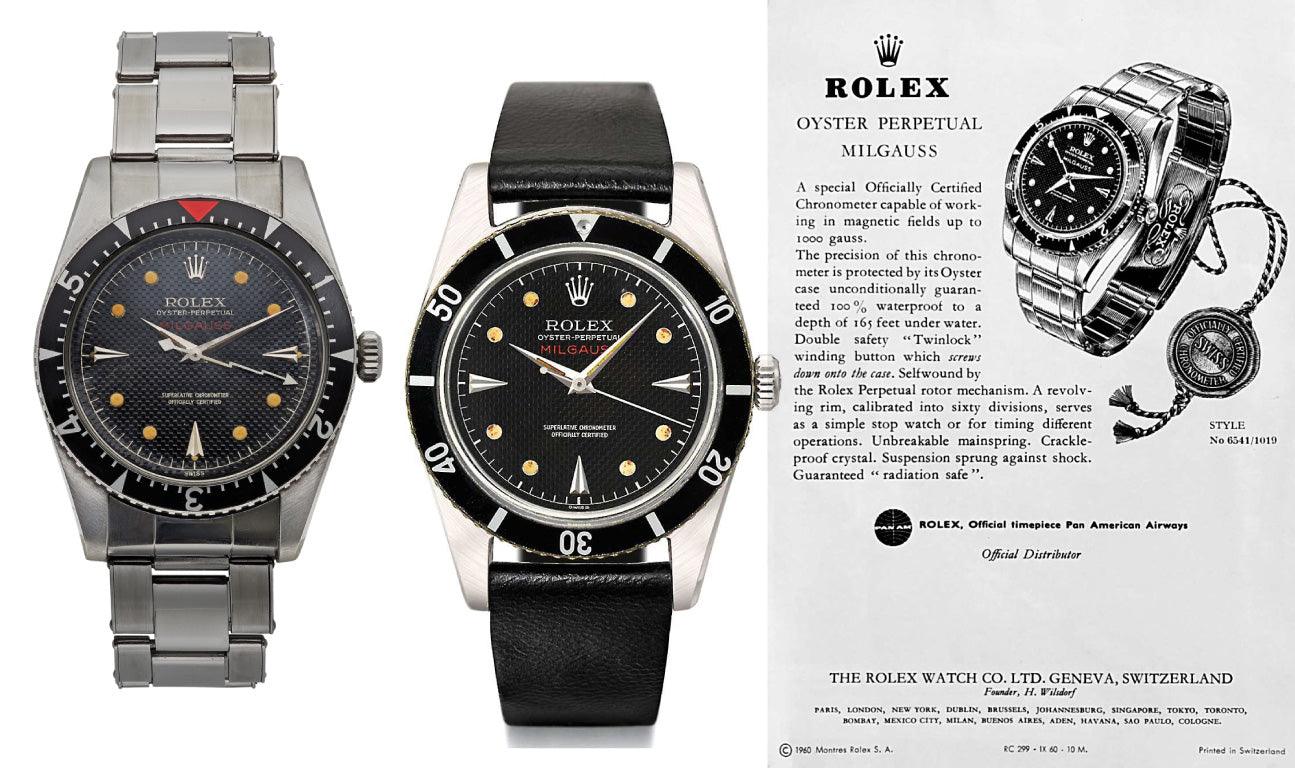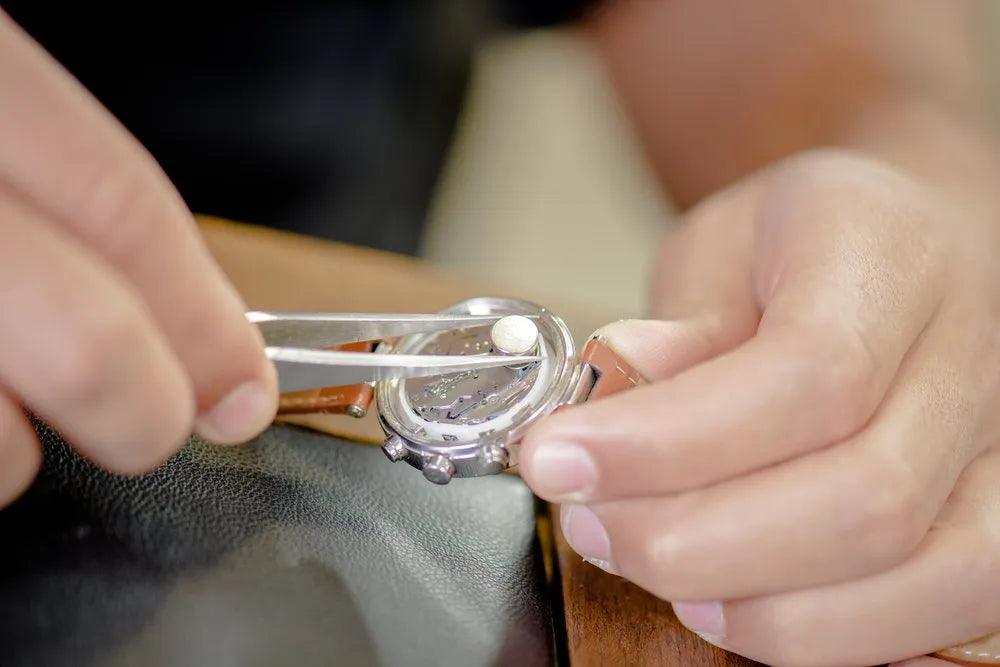
Rolex Milgauss: history and curiosities
The History of the Rolex Milgauss
It is said that at the time, scientists at CERN (European Organization for Nuclear Research) contacted Rolex directly to request a watch that they could safely wear while trying to unlock the secrets of the universe at the famous high-energy particle accelerator located in Geneva.
There is no certain proof of this, but this story is not so far from that of Pan-Am, which requested a watch from the Maison with the ability to simultaneously display two time zones. (GMT-Master) Read the article on the GMT-Master
The reference 6543
In 1956, the first Rolex Milgauss was born - the reference 6543 - which takes its name from the number one thousand and from “gauss”, the unit of measurement of magnetic fields.
The Milgauss, made only of steel, was created to meet the needs of scientists working in “high-risk” environments, i.e. exposed to magnetic fields. Among the key features of the ref. 6543 are the honeycomb dial and the red Milgauss inscription.

The reference 6541
The Milgauss 6543 is still extremely rare. Produced for less than two years in about 150 examples in 1956 it gave way to its successor with reference 6541, the resistance to magnetism was guaranteed not only by the anti-magnetic treatment of the mechanism but also by the presence of a second internal case back in metal that does not conduct magnetism.
With its black rotating bezel and 38 mm steel Oyster case, it shared much of its design with the Submariner. But there was one strong and clear distinguishing feature: to differentiate it from the diver, the Milgauss 6541 at one point featured an original lightning-shaped hand.

Rolex Milgauss 1019
After only four years Rolex retired the ref. 6541 and replaced it with the reference 1019, a model that was completely different from the design with which the Milgauss had come to light. We are at the beginning of the 60s and the watch takes a completely different aesthetic path that intersects with the look of the Explorer.
Production was limited but the modifications made and the range offered were many. It was now also offered with a silver dial as well as a black one, always with the word “MILGAUSS” in capital letters under 12 o’clock.
The model with a silver dial was perfect for CERN users. Unlike the black one, it had neither luminous hands nor indexes. Since dangerous radium was used at the time, the emanations of this luminescent substance were incompatible with use in a scientific laboratory. It is therefore quite natural that these no-lumen Milgauss are also highly sought after today.
In 1988, after realizing that, at a time when professional watches were virtually never worn outside the contexts for which they were designed, demand for the Milgauss had dropped to virtually zero, Rolex discontinued it.
The Milgauss since 2007
In 2007 Rolex presents the new references: 116400 with calibre 3131 and PARACHROM hairspring.
The case goes from 38mm to 40mm and the caseback is engraved with the words ROLEX OYSTER and MILGAUSS along with the crown symbol.

The Milgauss GV
In 2008, the reference 116400GV was presented, representing the “anniversary version” characterised by a green sapphire crystal, a new electric blue dial and the bell protecting the movement engraved with the letter B with an arrow, symbolising the density of the magnetic flux.

The Rolex Milgauss in practice
How does magnetism disturb the functioning of a watch?
It is known that magnetic fields measured in oersteds affect the regularity of a mechanical watch. A watch senses magnetism intermittently at 60 oersteds, while at 100 oersteds it stops working.
Note that magnetism in a watch is not temporary. Once it is affected, until it is demagnetized – which can sometimes be done with a tool without disassembling the movement (but not always) – it is practically unusable.
The phenomenon of magnetism can occur even if watches have been certified antimagnetic for years now.

